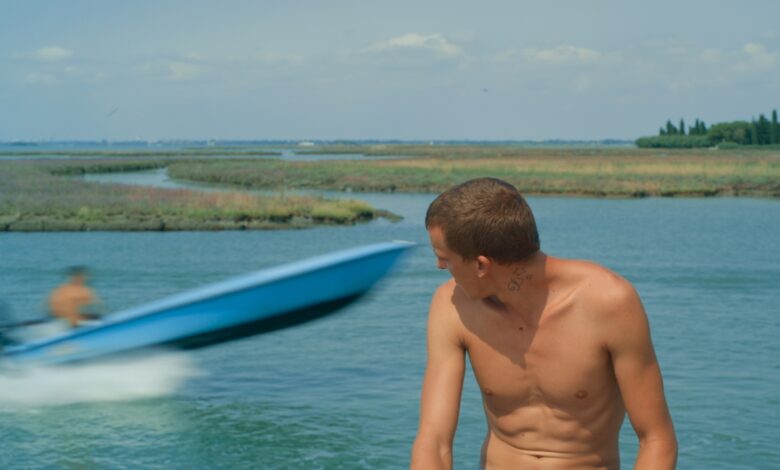Review Atlantide – Review on FilmTotaal


Director: Yuri Ancarani | Script: Yuri Ancarani | Cast: Daniele Barison (Daniele), Maila Dabalà (Maila), ea | Time to play: 100 minutes | Year: 2021
During the Venice Film Festival in 2021, two Italian declarations of love for the motorboat had their world premiere. by Paolo Sorrontino The hand of God it previously appeared on Dutch screens. After that it took a while, but after a short practice round during IDFA this other idiosyncratic boat movie can now finally be seen all over the Netherlands. atlantis is a fine example of Italian neorealism in which visual artist Yuri Ancarani leaves no stone unturned from the Venice of travel guides.
For Daniele, life revolves around two things; his speedboat and his girlfriend Maila, although the latter is quite interchangeable. In the Venetian lagoon there is a veritable subculture around ‘barchini’: speedboats tricked out by their teenage owners with flashing lights, banging speakers and stickers bearing the names of their girlfriends. Call them the nozems or oilers of the lagoon. They hold their speed records on wooden bollards. Outsider Daniele wants nothing more than to break those records to move up the social ladder.
that is written atlantis had its Dutch premiere during IDFA, it’s more obvious than you might expect. It took Ancarani months to earn the trust of the non-professional cast of him, allowing for a highly observational approach to the closed subculture. The high level of authenticity it offers is very reminiscent of the work of American independent director Sean Baker, known for his hybrid docu-fictions.
Wandering on the outskirts of a now soulless city, the youngsters spend their days, emphasized by the long duration of Ancarani’s shots and the parsimony of the dialogues. The plot seems as rudderless as the insider Daniele. The camera sometimes follows him continuously for minutes as he runs across the beautifully framed lagoon. The sound of the boat splashing in the water merging with the pounding techno adds to the film’s calming rhythm, which is more like waves coming and going.
Although the images sometimes resemble a music video, the highly saturated colors making tanned bodies and false fingernails appear more kitsch, the desperate existence of disillusioned youth is portrayed stark and conflicted. When Maila’s nail technician questions her about her plans for the future, she simply replies that she has given up on all her dreams, the camera fixed on her brightly colored nails.
On a deserted island filled with overgrown ruins, young people gather for a techno party. Naked bodies drag speakers onto a platform overlooking the lagoon. As the party progresses, a cruise ship fills the frame. Towering above the dancing crowd, incoming tourists gaze voyeuristically from their balconies, and as day turns to night, the unbroken stream of boats still blocks the view. It is Ancarani’s most candid moment, clearly exposing a socioeconomic flaw.
A hypnotic scene with a fatal accident is followed by a mourning motorboat procession that degenerates into a ghostly nocturnal tour through the claustrophobic canals of a deserted urban center. As the streets slowly flood, Ancarani tilts the image a quarter of a turn, accentuating the disorienting reflections on the smooth surface of the water, which seems to turn into a Rorschach test. Bombastic music accompanies the slowly sliding camera. It is a masterful and ambiguous ending that seems to be taken from a Gaspar Noé film.
Suddenly, the photogenic city looks more like a tomb, a post-apocalyptic water world reminiscent of the mythical civilization of Atlantis; swallowed by the ocean, and in the case of Venice, swallowed by mass tourism and rising sea levels. When the camera finally reaches the expanse of the lagoon and captures the first rays of the sun of a new day, it seems that we wake up as if from a feverish dream.